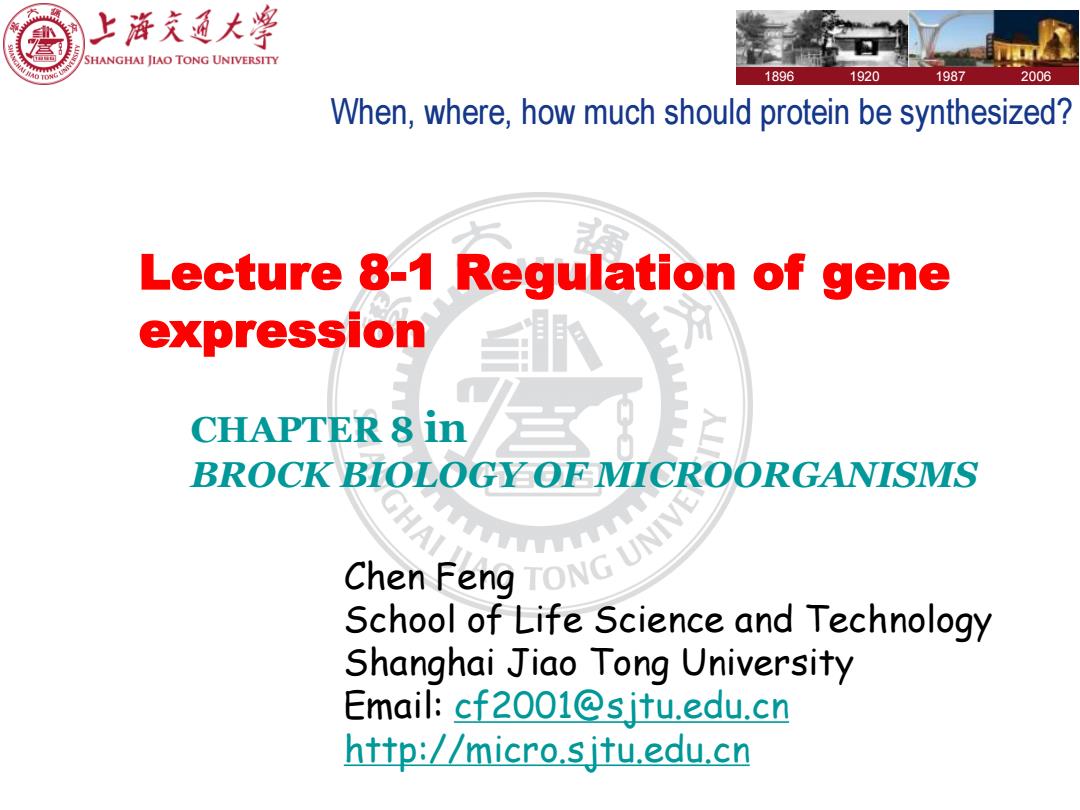
上浒充通大¥ SHANGHAI JIAO TONG UNIVERSITY 40 TONG 1896 1920 1987 2006 When,where,how much should protein be synthesized? Lecture 8-1 Regulation of gene expression CHAPTER 8 in BROCK BIOLOGYOFMICROORGANISMS Chen Feng TONG UN School of Life Science and Technology Shanghai Jiao Tong University Email:cf2001@sjtu.edu.cn http://micro.sjtu.edu.cn
1896 1920 1987 2006 Lecture 8-1 Regulation of gene expression When, where, how much should protein be synthesized? Chen Feng School of Life Science and Technology Shanghai Jiao Tong University Email: cf2001@sjtu.edu.cn http://micro.sjtu.edu.cn CHAPTER 8 in BROCK BIOLOGY OF MICROORGANISMS
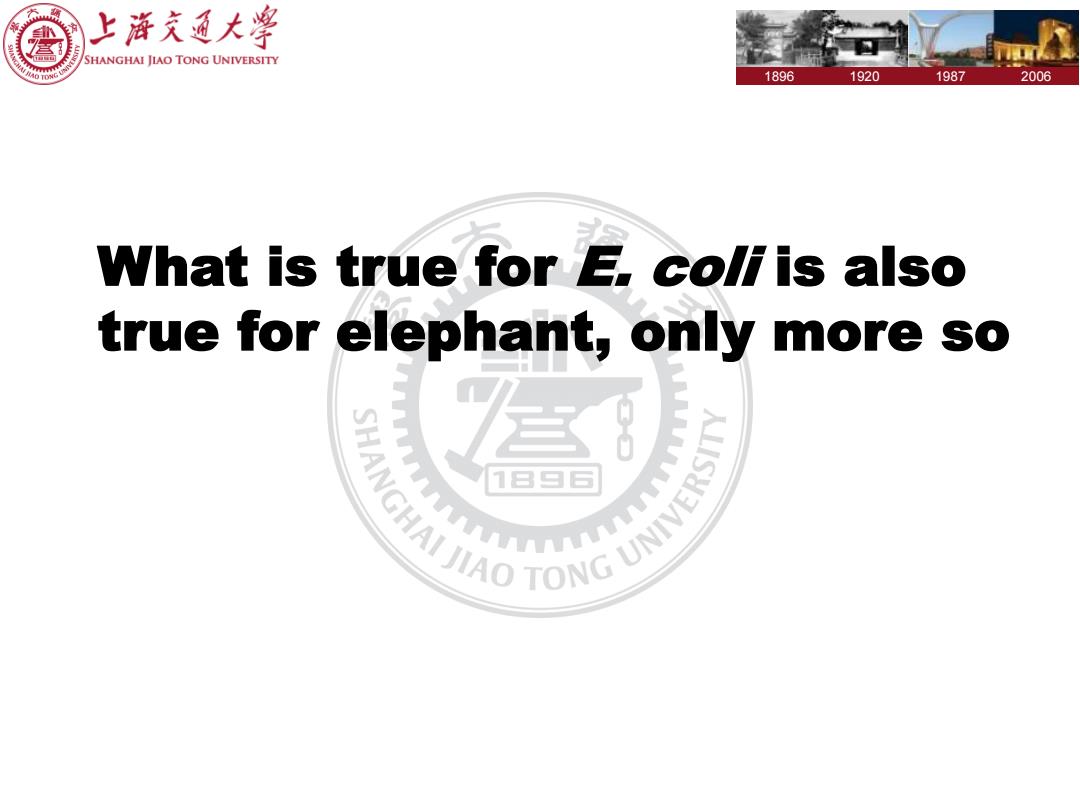
上游充通大¥ SHANGHAI JIAO TONG UNIVERSITY 1896 1920 1987 2006 What is true for E colf is also true for elephant,only more so acAI11A00AV/八I/rnc wwwwwn
1896 1920 1987 2006 What is true for E. coli is also true for elephant, only more so
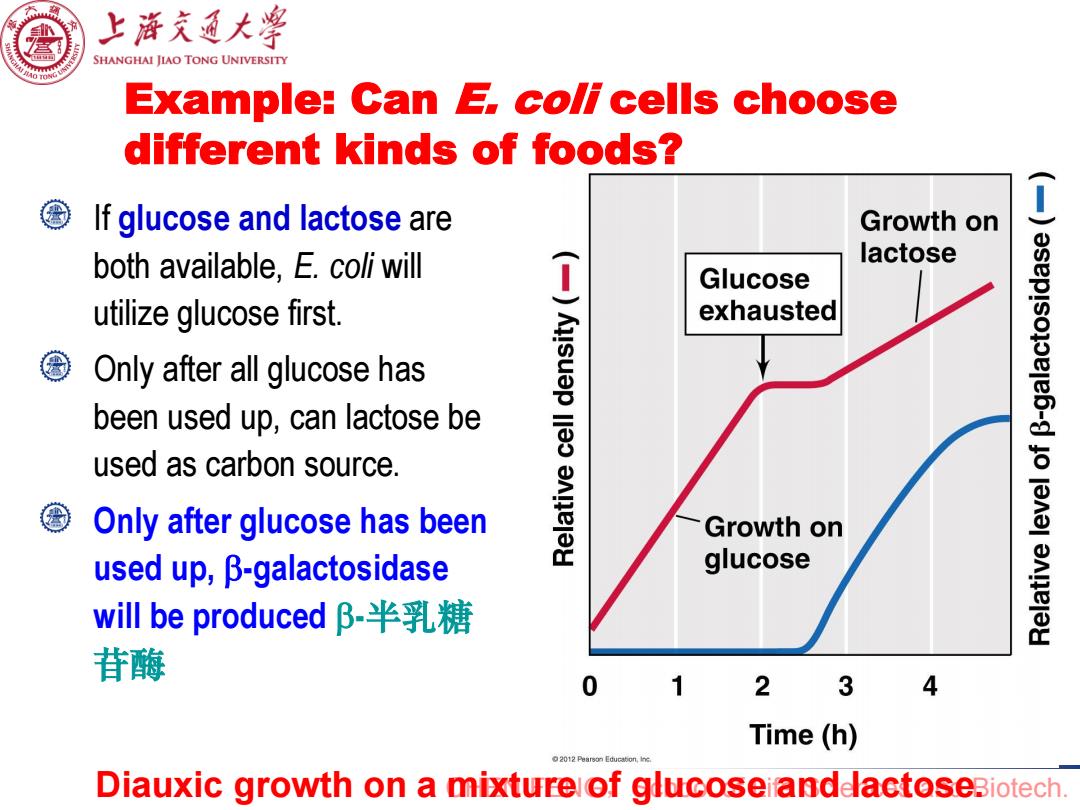
上游充通大 SHANGHAI JIAO TONG UNIVERSITY Example:Can E.col/cells choose different kinds of foods? If glucose and lactose are Growth on both available,E.coli will lactose Glucose utilize glucose first. exhausted Only after all glucose has been used up,can lactose be used as carbon source. Only after glucose has been llao anneley Growth on used up,B-galactosidase glucose will be produced B-半乳糖 苷酶 0 1 2 3 4 Time(h) 02012R Diauxic growth on a mixturelof glucoseianddactose3iotech
CHEN FENG,School of Life Sciences and Biotech. Example: Can E. coli cells choose different kinds of foods? If glucose and lactose are both available, E. coli will utilize glucose first. Only after all glucose has been used up, can lactose be used as carbon source. Only after glucose has been used up, -galactosidase will be produced -半乳糖 苷酶 Diauxic growth on a mixture of glucose and lactose
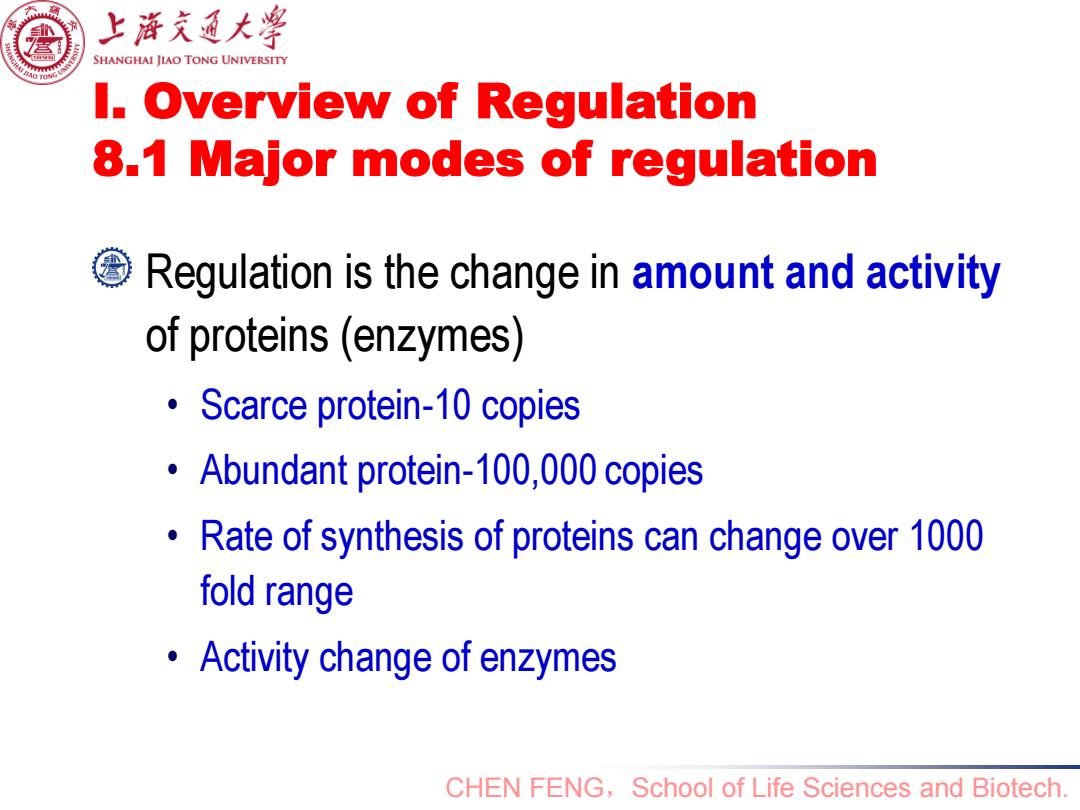
上浒充通大学 SHANGHAI JIAO TONG UNIVERSITY TONG I.Overview of Regulation 8.1 Major modes of regulation Regulation is the change in amount and activity of proteins(enzymes) Scarce protein-10 copies Abundant protein-100,000 copies Rate of synthesis of proteins can change over 1000 fold range Activity change of enzymes CHEN FENG,School of Life Sciences and Biotech
CHEN FENG,School of Life Sciences and Biotech. I. Overview of Regulation 8.1 Major modes of regulation Regulation is the change in amount and activity of proteins (enzymes) • Scarce protein-10 copies • Abundant protein-100,000 copies • Rate of synthesis of proteins can change over 1000 fold range • Activity change of enzymes
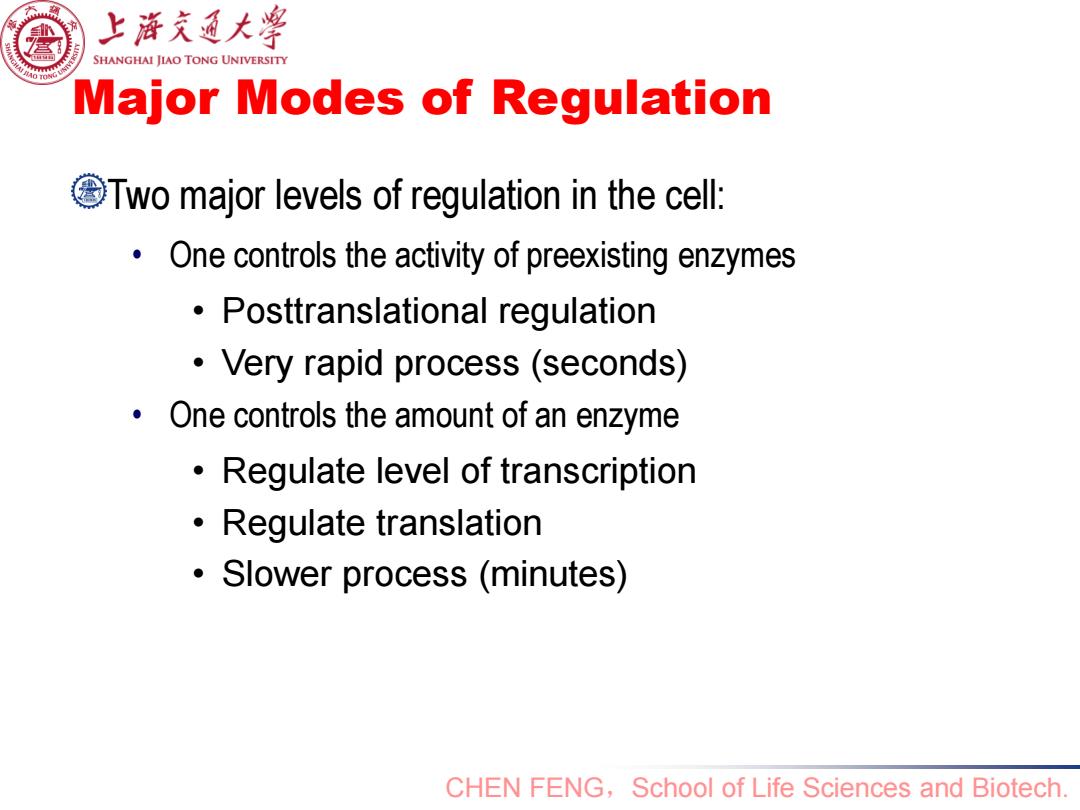
上浒充通大淫 SHANGHAI JIAO TONG UNIVERSITY Major Modes of Regulation Two major levels of regulation in the cell: One controls the activity of preexisting enzymes Posttranslational regulation Very rapid process (seconds) 。 One controls the amount of an enzyme Regulate level of transcription Regulate translation Slower process (minutes) CHEN FENG,School of Life Sciences and Biotech
CHEN FENG,School of Life Sciences and Biotech. Major Modes of Regulation Two major levels of regulation in the cell: • One controls the activity of preexisting enzymes • Posttranslational regulation • Very rapid process (seconds) • One controls the amount of an enzyme • Regulate level of transcription • Regulate translation • Slower process (minutes)
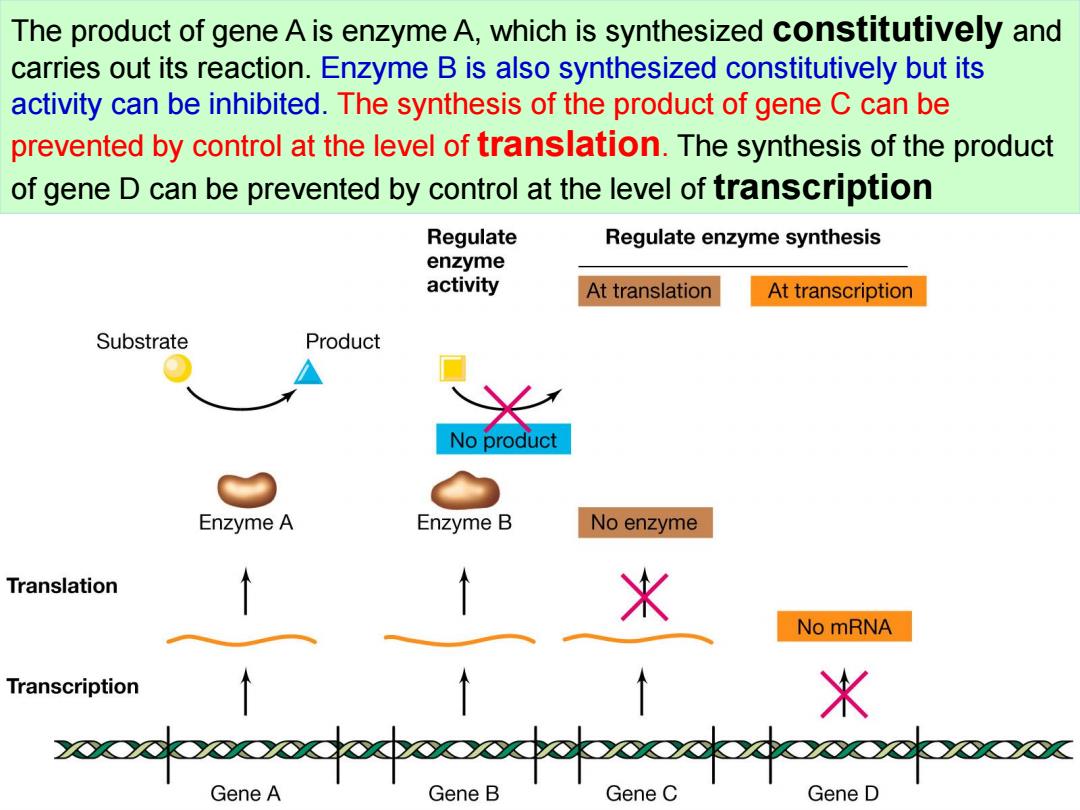
The product of gene A is enzyme A,which is synthesized constitutively and carries out its reaction.Enzyme B is also synthesized constitutively but its activity can be inhibited.The synthesis of the product of gene C can be prevented by control at the level of translation.The synthesis of the product of gene D can be prevented by control at the level of transcription Regulate Regulate enzyme synthesis enzyme activity At translation At transcription Substrate Product No product Enzyme A Enzyme B No enzyme Translation 1米 No mRNA Transcription 米 ene
An overview of the mechanisms that can be used in regulation The product of gene A is enzyme A, which is synthesized constitutively and carries out its reaction. Enzyme B is also synthesized constitutively but its activity can be inhibited. The product of gene A is enzyme A, which is synthesized constitutively and carries out its reaction. Enzyme B is also synthesized constitutively but its activity can be inhibited. The synthesis of the product of gene C can be prevented by control at the level of translation. The product of gene A is enzyme A, which is synthesized constitutively and carries out its reaction. Enzyme B is also synthesized constitutively but its activity can be inhibited. The synthesis of the product of gene C can be prevented by control at the level of translation. The synthesis of the product of gene D can be prevented by control at the level of transcription
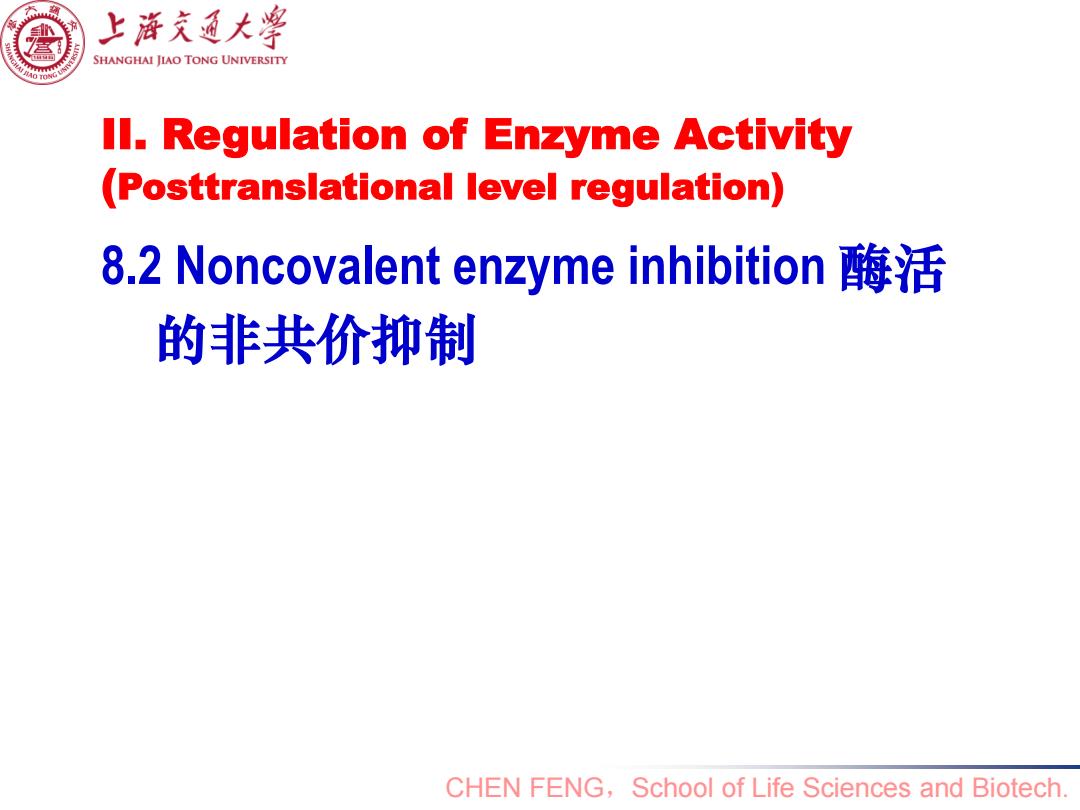
上游充通大¥ SHANGHAI JIAO TONG UNIVERSITY II.Regulation of Enzyme Activity (Posttranslational level regulation) 8.2 Noncovalent enzyme inhibition酶活 的非共价抑制 CHEN FENG,School of Life Sciences and Biotech
CHEN FENG,School of Life Sciences and Biotech. II. Regulation of Enzyme Activity (Posttranslational level regulation) 8.2 Noncovalent enzyme inhibition 酶活 的非共价抑制
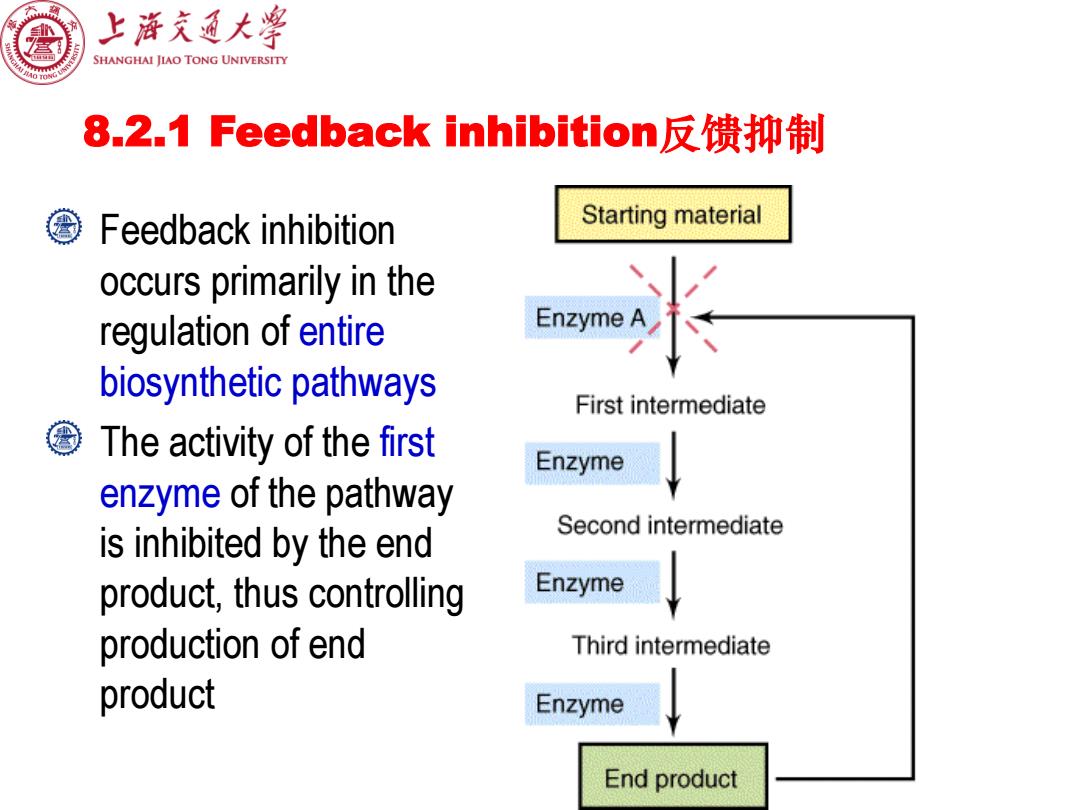
上游充通大学 SHANGHAI JIAO TONG UNIVERSITY 8.2.1 Feedback inhibition反馈抑制 Feedback inhibition Starting material occurs primarily in the regulation of entire Enzyme A biosynthetic pathways First intermediate The activity of the first Enzyme enzyme of the pathway is inhibited by the end Second intermediate product,thus controlling Enzyme production of end Third intermediate product Enzyme End product
CHEN FENG,School of Life Sciences and Biotech. 8.2.1 Feedback inhibition反馈抑制 Feedback inhibition occurs primarily in the regulation of entire biosynthetic pathways The activity of the first enzyme of the pathway is inhibited by the end product, thus controlling production of end product

Mechanism:Allostery变构 Enzyme Allosteric site Substrate-binding site An allosteric enzyme Allosteric Substrate effector has the Active site, Conformational change in substrate-binding site; Enzyme reaction where the substrate enzyme reaction proceeds inhibited binds,and the Allosteric site,where Substrate the inhibitor binds cannot bind reversibly.活性位点 No enzyme reaction Enzyme reaction 与变构位点
Mechanism: Allostery 变构 An allosteric enzyme has the Active site, where the substrate binds, and the Allosteric site, where the inhibitor binds reversibly.活性位点 与变构位点
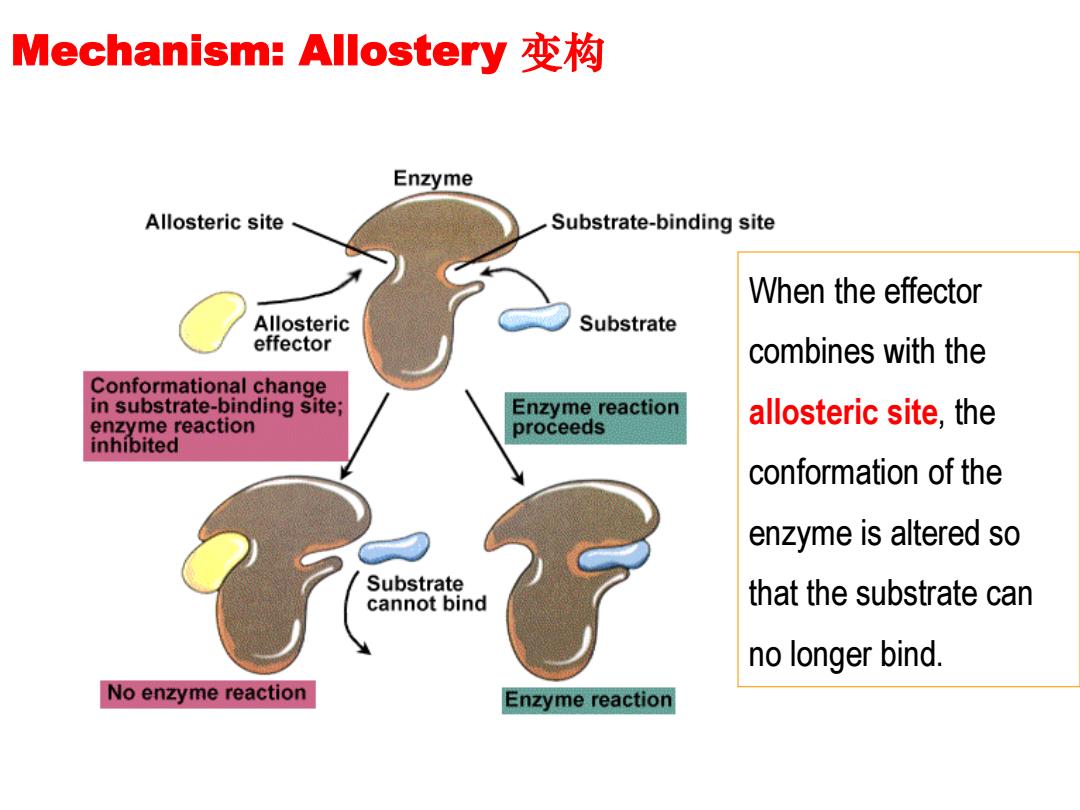
Mechanism:Allostery变构 Enzyme Allosteric site Substrate-binding site When the effector Allosteric Substrate effector combines with the Conformational change in substrate-binding site; Enzyme reaction enzyme reaction allosteric site,the proceeds inhibited conformation of the enzyme is altered so Substrate cannot bind that the substrate can no longer bind. No enzyme reaction Enzyme reaction
Mechanism: Allostery 变构 When the effector combines with the allosteric site, the conformation of the enzyme is altered so that the substrate can no longer bind